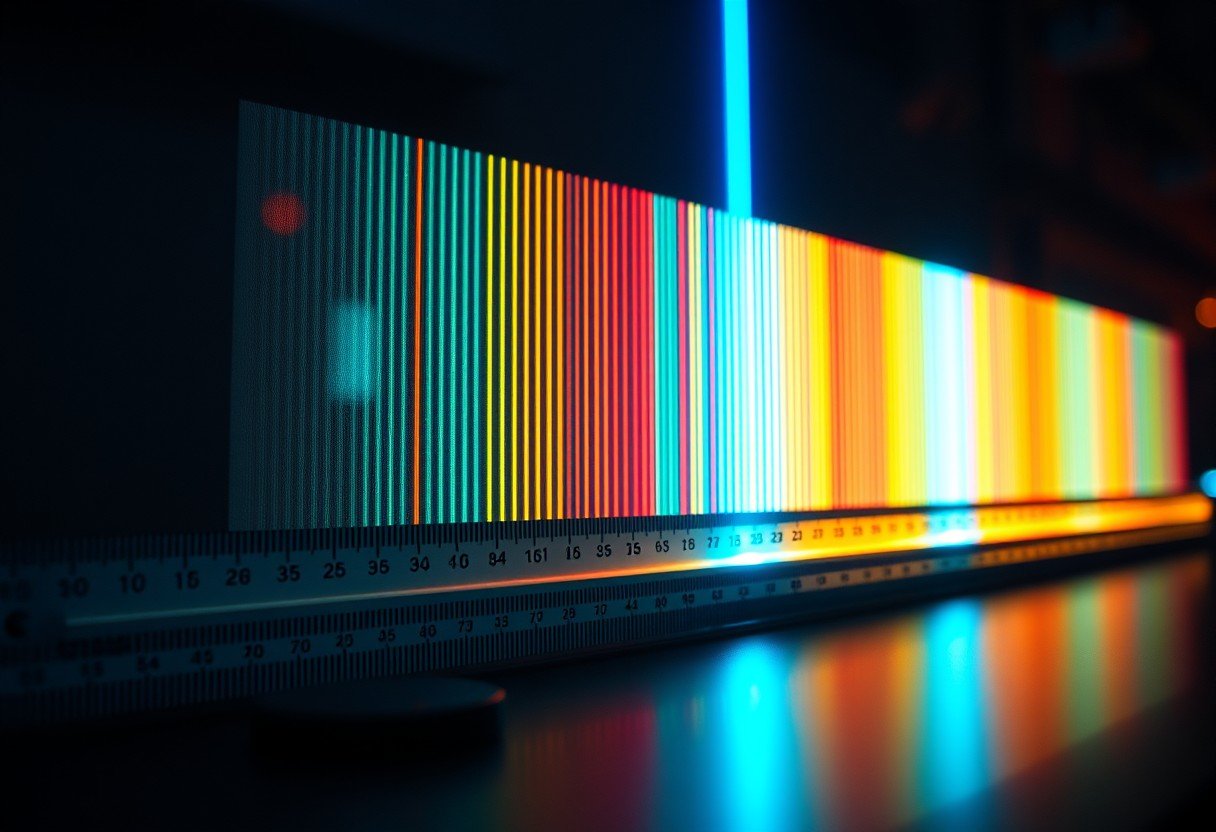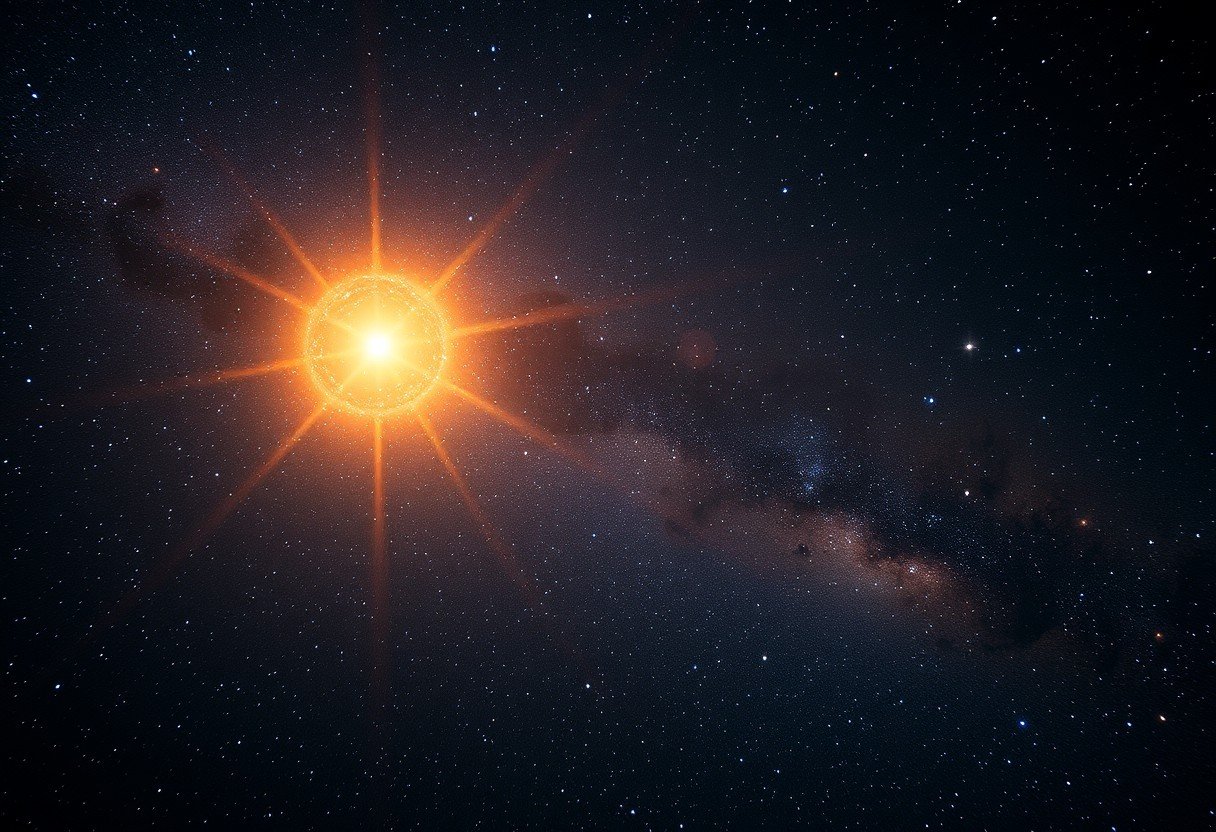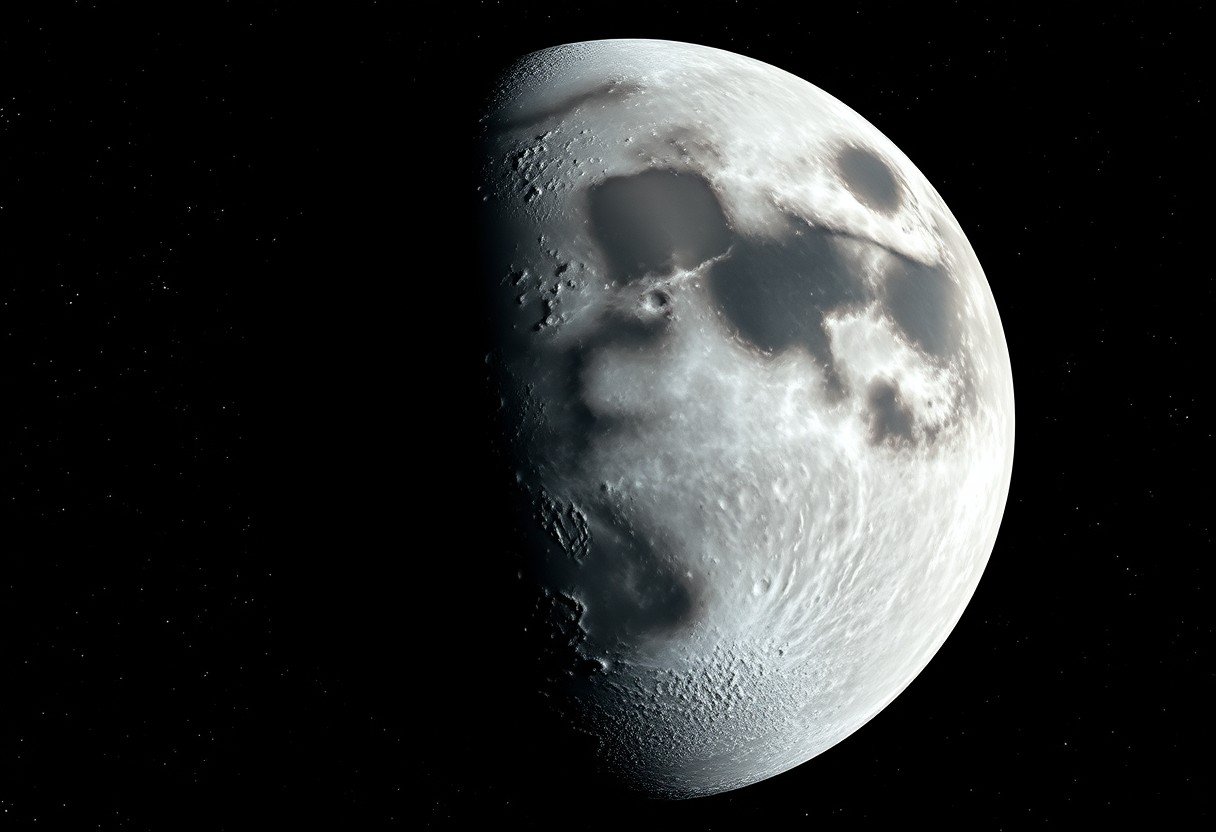Just as various settings can influence the outcome of an experiment, the wavelength of light plays a crucial role in determining fringe spacing in interference patterns. When you decrease the wavelength of light used in an experiment, you’ll notice a corresponding change in the distance between fringe lines. Understanding this relationship not only enhances your grasp of wave optics but also helps you predict outcomes in various practical applications, such as in optical instruments and photonics technologies. Join us as we explore the implications of this phenomenon and what it means for your experiments.
Key Takeaways:
- Fringe Spacing: The spacing between the interference fringes will decrease when the wavelength of the light is decreased.
- Inverse Relationship: There exists an inverse relationship between the wavelength of light and the fringe spacing; as wavelength decreases, fringe spacing contracts.
- Interference Pattern: The overall pattern of interference will become more closely spaced, making the fringes appear to be bunched together.
- Experiment Variability: The change in fringe spacing is significant in experiments such as the double-slit experiment, where precision in measurements is crucial.
- Applications: Understanding the relationship between wavelength and fringe spacing is important for applications in optics, such as designing lasers and optical instruments.
The Concept of Fringe Spacing
To understand the behavior of light in a double-slit experiment, you must grasp the concept of fringe spacing. Fringe spacing refers to the distance between consecutive bright or dark fringes on a screen when light waves interfere. This spacing is crucial in various applications, such as determining wavelengths and studying wave properties, providing insights into the fundamental characteristics of light.
Definition and Importance
Conceptually, fringe spacing is defined as the distance that separates interference fringes resulting from coherent light sources. Its importance lies in enabling precise measurements in scientific experiments, allowing you to explore phenomena like diffraction and wave-particle duality, ultimately enhancing your understanding of optics and wave behavior.
Factors Influencing Fringe Spacing
Fringe spacing is influenced by multiple factors, which include:
- The wavelength of the light used
- The distance between the slits
- The distance from the slits to the observation screen
Recognizing these factors helps you predict changes in fringe patterns and make calculations necessary for experiments.
For instance, you should consider that a longer wavelength results in wider spacing between fringes, while a shorter wavelength leads to closer spacing. Additionally, increasing the distance between the slits or the observation screen will also result in wider fringes. These relationships can be summarized as:
- Increased wavelength = Wider fringe spacing
- Increased slit separation = Wider fringe spacing
- Increased distance to the screen = Wider fringe spacing
Recognizing these relationships can significantly enhance your predictions and experiments in optical physics.

The Role of Wavelength in Interference Patterns
You may wonder how the wavelength of light influences interference patterns, particularly the spacing between fringes. When light passes through slits or other openings, it diffracts and creates patterns of constructive and destructive interference. The characteristics of these patterns are highly dependent on the wavelength, with shorter wavelengths producing different fringe spacings than longer wavelengths. Understanding this relationship is crucial for applications in optics and photonics.
Understanding Wavelength
An understanding of wavelength is necessary for grasping its impact on interference patterns. Wavelength refers to the distance between successive peaks of a wave. In light, it dictates the color we perceive, its energy, and how it interacts with materials. Different wavelengths produce distinct interference patterns, making them a critical factor in various optical experiments and technologies.
Wavelength and Fringe Spacing Relationship
One important relationship to grasp is how changes in wavelength affect fringe spacing. The fringe spacing in an interference pattern directly correlates with the wavelength of the light used. Specifically, as the wavelength decreases, the fringe spacing becomes narrower, leading to more closely packed interference fringes. This relationship is pivotal in applications such as spectroscopy, where precise measurements are paramount.
Another key aspect to consider is that the amount of fringe spacing can significantly influence the visibility and clarity of the interference pattern. By adjusting the wavelength, you can optimize the spacing to achieve better resolution in your results. This principle is exploited in various technologies, from simple laboratory experiments to advanced imaging systems, demonstrating the powerful role that wavelength plays in optical phenomena.
Effects of Decreasing Wavelength
After you decrease the wavelength of light, the spacing between the interference fringes also changes. This alteration occurs because fringe spacing is directly related to the wavelength; as the wavelength decreases, the fringe spacing becomes narrower. This effect has significant implications in various applications, such as diffraction patterns observed in optical experiments.
Impacts on Fringe Width
Effects of a shorter wavelength lead to a decrease in fringe width, which you will observe as the spacing between successive bright or dark fringes contracts. This change can influence the visibility and clarity of the patterns produced in optical experiments, requiring careful adjustments in measurement setups to maintain accuracy.
Comparative Analysis with Increased Wavelength
Wavelength variations in the opposite direction will result in larger fringe spacing. By comparing the two scenarios, you can gain insight into how light behaves under different conditions. Understanding these dynamics is crucial for applications in fields like spectroscopy, where precise measurements can lead to better analytical results.
Wavelength Comparison Table
| Wavelength Condition | Fringe Spacing |
|---|---|
| Decreased Wavelength | Narrower Fringe Spacing |
| Increased Wavelength | Wider Fringe Spacing |
Wavelength adjustments directly impact the interference patterns, making it necessary for you to consider these changes in practical applications. As the wavelength increases, the fringe spacing widens, making the patterns easier to differentiate but potentially complicating precise measurements. It’s vital to recognize how variations in wavelength—either increasing or decreasing—can significantly affect your results and interpretations in experiments.
Wavelength Impact Analysis Table
| Wavelength Variation | Impacted Parameters |
|---|---|
| Decreased Wavelength | Narrower fringes, enhanced detail |
| Increased Wavelength | Wider fringes, reduced detail |
Experimental Evidence
Not only does the theory predict changes in fringe spacing with varying wavelengths, but experimental evidence consistently supports this claim. Through the application of precise measurements in controlled environments, researchers have observed that reducing the wavelength of light results in a noticeable decrease in fringe spacing. These findings reaffirm the relationships established by the wave nature of light and serve to enhance your understanding of interference patterns.
Methodologies Used
An array of methodologies has been employed to investigate the relationship between light wavelength and fringe spacing. These often include double-slit experiments, where you can observe interference patterns using coherent light sources. Researchers frequently utilize monochromatic light sources, such as lasers, for precision, measuring fringe distances under varying wavelength conditions carefully to gather reliable data.
Results and Observations
Methodologies employed in these experiments reveal significant trends correlating reduced wavelengths with tighter fringe spacing. Experimental data indicate that as the wavelength decreases, the distance between fringes also shrinks, validating theoretical predictions.
With meticulous experimentation, researchers have documented that doubling the light’s frequency effectively halves the spacing between interference fringes. These observations have profound implications for the fields of optics and photonics, demonstrating how understanding these variables allows you to manipulate light behavior for technological advancements. Hence, the impact of wavelength on fringe patterns not only contributes to academic knowledge but also has practical applications in imaging and optical device design.
Practical Applications of Fringe Spacing Changes
All optical systems rely on understanding fringe spacing changes, especially in fields like interferometry and spectroscopy. When you decrease the wavelength of light, the alterations in fringe spacing can enhance precision in measurements, allowing you to benefit from improved resolution in optical devices. This principle is not just theoretical; it’s instrumental in advancing technologies in various applications, from telecommunications to manufacturing.
In Scientific Research
An imperative application of fringe spacing changes can be found in scientific research, especially in studying the properties of materials and phenomena at microscopic levels. By manipulating light wavelengths and observing resulting changes in fringe patterns, you can gain insights into material properties, molecular structures, and even quantum behaviors, expanding your understanding of fundamental physics.
In Technological Innovations
Changes in fringe spacing also have considerable implications for technological innovations, particularly in fields like fiber optics and photonic devices. As you research into developing new optical technologies, understanding how wavelength affects fringe patterns can lead to advancements in communication systems and imaging techniques.
Understanding the relationship between fringe spacing and wavelength can position you at the forefront of technological advancements. For instance, in fiber optic communication, optimizing fringe spacing by adjusting light wavelengths can significantly improve data transmission rates and efficiency. Additionally, in imaging systems, precise control over wavelength adjustment enables you to enhance image clarity and resolution, making this knowledge invaluable for your future projects and research endeavors.
Summary of Key Findings
Once again, you will find that decreasing the wavelength of light directly impacts the fringe spacing observed in interference patterns. As the wavelength shrinks, the distance between the fringes decreases, leading to closely spaced bright and dark bands. This relationship is governed by the principles of wave mechanics, specifically the equation that relates fringe spacing to wavelength and the geometry of the experimental setup. Understanding this concept is important for grasping the fundamentals of light interference and its applications in various optical technologies.
Final Words
Following this, if you decrease the wavelength of the light used in a double-slit experiment or similar setups, you will observe a tighter fringe spacing on the interference pattern. This occurs because fringe spacing is inversely proportional to the wavelength; as you shorten the wavelength, the distance between successive bright or dark fringes decreases. Consequently, you may notice that the interference pattern becomes more closely packed, demonstrating the fundamental relationship between wavelength and interference in wave physics.
FAQ
Q: What is fringe spacing in the context of wave optics?
A: Fringe spacing refers to the distance between adjacent bright or dark fringes in an interference pattern created by the superposition of waves, such as light waves. It is an necessary concept in experiments like Young’s double-slit experiment, where light waves passing through two closely spaced slits create alternating bright and dark bands on a screen due to constructive and destructive interference.
Q: How is fringe spacing mathematically defined?
A: Fringe spacing, often denoted as ‘Δy’, can be mathematically defined using the formula Δy = λL/d, where λ is the wavelength of the light used, L is the distance between the slits and the screen, and d is the distance between the two slits. This relationship indicates that fringe spacing is directly proportional to the wavelength and affected by the distance to the screen and the slit separation.
Q: What happens to fringe spacing if the wavelength of light is decreased?
A: If the wavelength of the light is decreased, the fringe spacing will also decrease. This is because, according to the formula Δy = λL/d, a smaller λ results in a smaller value for Δy, leading to closely spaced fringes on the observation screen. Therefore, decreasing the wavelength leads to a more compact interference pattern.
Q: Why does increasing the distance between the slits and the screen affect fringe spacing?
A: Increasing the distance (L) between the slits and the screen will result in an increase in fringe spacing. The formula Δy = λL/d highlights that fringe spacing is directly proportional to L; therefore, as the distance increases, the spacing between the fringes becomes larger, provided that other variables (wavelength and slit separation) remain constant.
Q: Can the slit separation affect fringe spacing, and if so, how?
A: Yes, the slit separation (d) does affect fringe spacing. According to the fringe spacing formula Δy = λL/d, fringe spacing is inversely proportional to the distance between slits. Therefore, if the slit separation is increased, the fringe spacing decreases, leading to a tighter interference pattern. Conversely, reducing the slit separation results in wider spacing between the fringes.








Leave a Comment